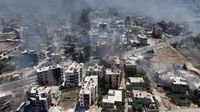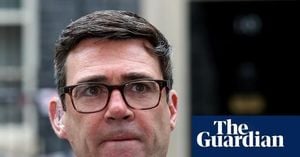As world leaders gather in New York for the United Nations’ 80th General Assembly, an uneasy spotlight falls on Syria—a country whose internal fractures have spilled across borders for more than a decade. On September 26, 2025, Israeli Prime Minister Benjamin Netanyahu prepared to address the UN High Level Week, while former President Donald Trump held talks with Syria’s new leader, Ahmed Hussein al-Sharaa, on the sidelines. Their discussions, focused on prospects for Syria–Israel détente, have centered on demilitarization, border lines, and the legitimacy of the new Damascus regime. Yet, beneath the diplomatic choreography, the fate of Syria’s most vulnerable—its minorities, particularly the Druze—hangs in the balance.
According to CNN, President al-Sharaa’s debut on the world stage was met with applause, but back home, the Druze minority remained ensnared in a relentless cycle of violence and fear. In Suwayda province, the heartland of Syria’s Druze, at least 718 people were killed in just one week of violence as of July 19, 2025, a grim figure confirmed by war monitors and reported by CNN. The carnage was not a sudden eruption but the latest chapter in a long history of marginalization and exclusion faced by Syria’s minorities.
The Druze, a closed religious sect blending Isma’ili Islam, Gnostic thought, and local tradition, constitute just 3 percent of Syria’s population as of 2022. Their communities are concentrated in the Jabal al-Druze region (Suwayda province) and in enclaves around Damascus, such as Jaramana and Ashrafiyat Sahnaya. Historically, as detailed by The Times of Israel, Syria’s rulers have treated the Druze with indifference—rarely assimilated, never outright demonized, but persistently sidelined in political and military hierarchies. Under the Assad regime, the Druze were denied water, land, development, and senior security roles, fostering a quiet but deep-seated discontent.
This pattern of exclusion has not been limited to the Druze. Syria’s Jews, once a vibrant community in cities like Damascus and Aleppo, have all but vanished following pogroms and discriminatory restrictions. Assyrians, Chaldeans, and Syriac Christians in the northeast have faced forced conversions and erasure of their cultural heritage, while the Kurds have endured decades of Arabization and denial of basic rights. Even Alawites, Ismailis, and Shia minorities—groups once favored by the regime—have faced retaliation and violence in the shifting sands of post-Assad Syria.
The summer of 2025, however, thrust the Druze crisis into the international spotlight. In late April, clashes erupted in Jaramana between Druze militias and security elements loyal to the new government, leaving at least 10 dead. Government officials quickly brokered a truce and promised compensation for victims’ families, but trust was in short supply. The violence soon spread to Sahnaya, where, according to the Syrian Observatory for Human Rights, at least 22 people were killed—six Druze fighters and sixteen government-aligned forces.
By July, Suwayda itself became the epicenter of catastrophe. Druze militias clashed with Sunni Bedouin tribes, often backed or tolerated by government-affiliated forces. Over four days, hundreds were killed, dozens of homes burned, and reports of summary executions, kidnappings, and looting mounted. Ceasefire efforts collapsed almost immediately, underscoring the absence of any real authority over the warring sides. As CNN reporters witnessed firsthand, the violence left deep scars—both physical and psychological—on the Druze community.
Israel, with its own Druze minority and longstanding cross-border ties, could not remain a bystander. In March 2025, Israeli officials announced the delivery of thousands of humanitarian aid packages to Suwayda, including staples like flour, oil, and sugar. Movement restrictions for Syrian Druze were eased, allowing limited entry and work permits in the Golan Heights. The same month, nearly one hundred Druze from Syria crossed into Israeli-controlled territory, a symbolic gesture of solidarity and sanctuary.
But humanitarian gestures soon gave way to military intervention. In April, Israeli jets struck extremist groups accused of preparing attacks on Druze villages. When violence in Suwayda escalated in July, Israel expanded its operations, targeting command centers, military convoys, and installations near Damascus. These actions, as reported by The Times of Israel, were framed as necessary measures to deter massacres and send a clear warning: the safety of Druze communities was non-negotiable.
Perhaps most consequential, however, are reports that Israel has gone further—arming and paying the salaries of Druze militias inside Syria. Historically fragmented and locally focused, these militias are now being consolidated under Israeli support, marking a significant escalation. This move, while framed as defensive, risks drawing Israel deeper into Syria’s internal conflicts and blurring the line between humanitarian protection and strategic intervention.
Within Israel, the crisis has spurred powerful reactions. The Israeli Druze spiritual leadership met with Defense Minister Israel Katz, demanding stronger intervention and declaring “days of rage” to protest what they called a massacre. Their mobilization signaled that the violence in Suwayda was not merely a distant conflict, but a direct test of Israel’s credibility and the solidarity binding Druze communities across borders.
Diplomatic efforts, meanwhile, have focused on three pillars: demilitarization of southern Syria, recognition of the new presidency in Damascus, and the drawing of secure borders. Netanyahu has insisted that Israel’s acceptance of any peace deal depends on the full demilitarization of Quneitra, Daraa, and Suwayda—regions with significant Druze populations—and the exclusion of Islamist or Hayat Tahrir al-Sham (HTS) forces. President al-Sharaa, for his part, has demanded respect for Syrian sovereignty and international oversight of any pact.
Yet, as negotiations proceed, a crucial element remains missing: enforceable commitments to protect Syria’s minorities. The frameworks under discussion treat southern Syria as real estate to be managed, rather than a mosaic of fragile communities whose survival depends on more than border lines and ceasefires. Without binding clauses, external guarantors, or mechanisms for local autonomy, minority protections are left to the vagaries of power politics.
The consequences of this omission are not abstract. As Rawan Osman, a Syrian-Lebanese activist, told protesters in New York, “They are literally mocking the suffering and the pain and the grieving of their fellow Syrians for the sake of a former Al-Qaeda member who is now their hero.” The humiliation and violence faced by the Druze have become a rallying cry, not just for their own survival but for the very idea of a plural, inclusive Syria.
The survival of the Druze is more than a humanitarian concern; it is a litmus test for Syria’s future and the credibility of any peace deal. Their territories—Jabal al-Druze, Suwayda, and the Golan periphery—sit along key borderlands. Should these areas collapse into chaos, corridors would open for extremist actors and destabilize fragile regional arrangements. For Israel, the stakes are both moral and political. To abandon the Druze would not only undermine its relationship with a loyal minority within its own borders but also threaten its own security frontier.
As Netanyahu prepares to speak at the United Nations, and as world leaders debate the future of Syria, the question remains: will peace be built on the erasure of minorities, or will it rest on their protection? The answer, for the Druze and for Syria itself, may determine the shape of the region for years to come.




